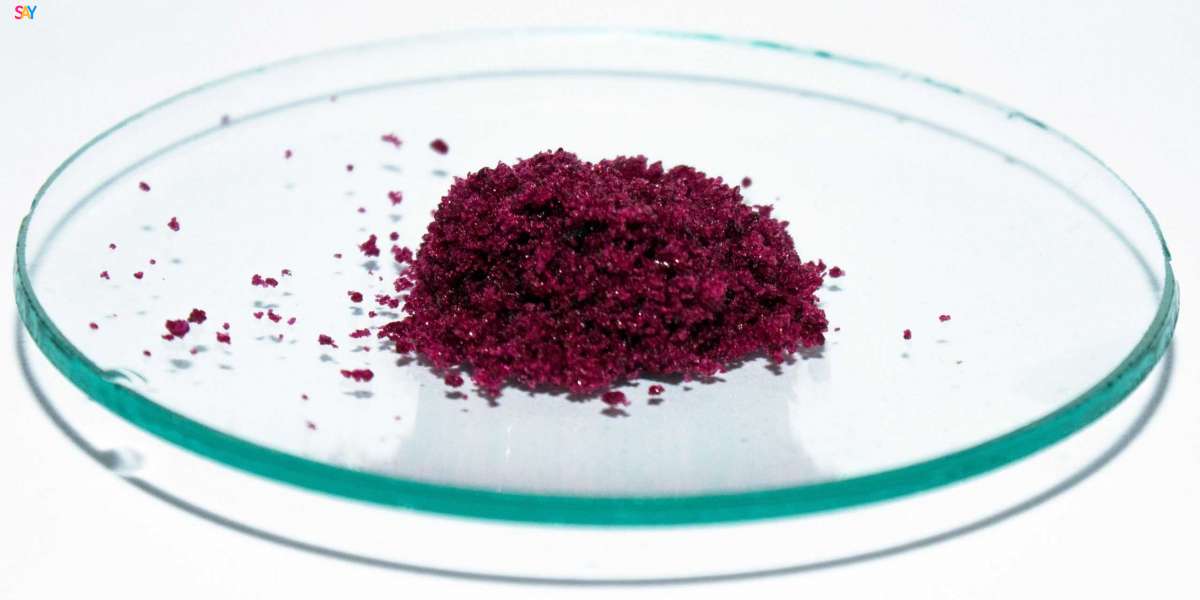Cobalt(II) chloride, also known as CoCl₂, is an inorganic compound that has several important applications in chemistry, industry, and even in everyday products. This versatile chemical has captured the attention of scientists and manufacturers due to its unique properties. If you're working with cobalt compounds or interested in chemistry, understanding its characteristics and potential uses is essential. In this article, we’ll discuss the composition, applications, safety considerations, and other important facts about cobalt(II) chloride.
Chemical Properties and Composition
Cobalt(II) chloride is a compound that consists of cobalt in the +2 oxidation state and chloride ions. It is typically found in the form of a blue crystalline solid that can change color when exposed to different conditions. The most interesting feature of cobalt(II) chloride is its hygroscopic nature, meaning it can absorb water from the environment and change its color. In its anhydrous form, cobalt(II) chloride appears as a pink or red solid, while the hydrated form is blue. This property makes cobalt(II) chloride a useful indicator for humidity levels.
Uses in Various Industries
Cobalt(II) chloride has diverse applications across different fields. One of its most notable uses is in the creation of humidity indicators. Due to its ability to change color based on moisture content, it’s commonly found in products designed to monitor humidity, such as desiccators and moisture control devices. Additionally, cobalt(II) chloride plays a role in electroplating, where it is used as a source of cobalt for coating metals to enhance their resistance to corrosion and improve their appearance.
The compound is also utilized in the production of pigments. Cobalt(II) chloride is used to create vibrant colors in glass and ceramics, adding to the variety of shades found in industrial paints and coatings. Another significant use is in the production of catalysts in certain chemical reactions, especially in organic synthesis processes.
Health and Safety Considerations
Despite its useful applications, cobalt(II) chloride can be hazardous if not handled properly. Prolonged exposure to cobalt compounds has been linked to various health concerns, including respiratory issues and skin irritation. Inhalation of cobalt dust or fumes can cause lung problems, while skin contact with the substance can lead to allergic reactions or dermatitis. It’s important to follow safety guidelines and use proper protective equipment when working with cobalt(II) chloride, especially in industrial or laboratory settings.
Additionally, the compound is classified as a possible carcinogen by health organizations due to its potential link to cancer with long-term exposure. For this reason, it’s crucial to handle cobalt(II) chloride with care and ensure that exposure is minimized. Proper ventilation, protective clothing, and adherence to safety protocols can help reduce the risks associated with this compound.
Conclusion
Cobalt(II) chloride is a fascinating compound with a range of practical applications. From its role in humidity indicators and electroplating to its use in the production of pigments and catalysts, cobalt(II) chloride plays a crucial part in various industries. However, it’s important to be aware of the safety risks involved with handling the compound. By understanding its properties, uses, and potential hazards, individuals can work safely with cobalt(II) chloride and appreciate its versatility in different fields. Always remember to follow appropriate safety procedures when dealing with this chemical to ensure safe and efficient usage. Visit https://noahchemicals.com/blog/what-to-know-about-cobalt-ii-chloride/ for more details.





